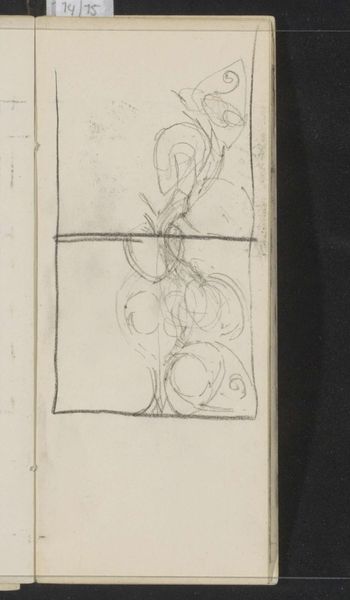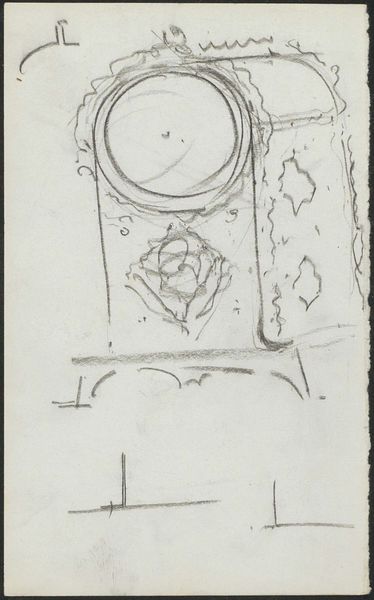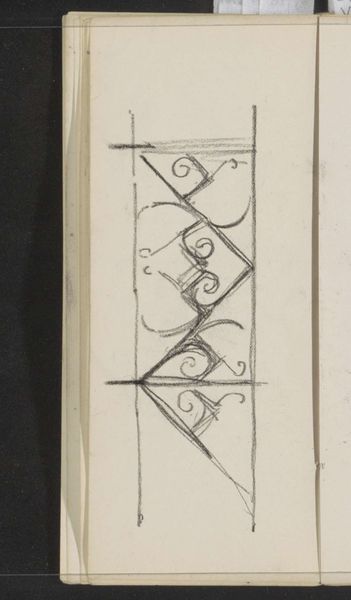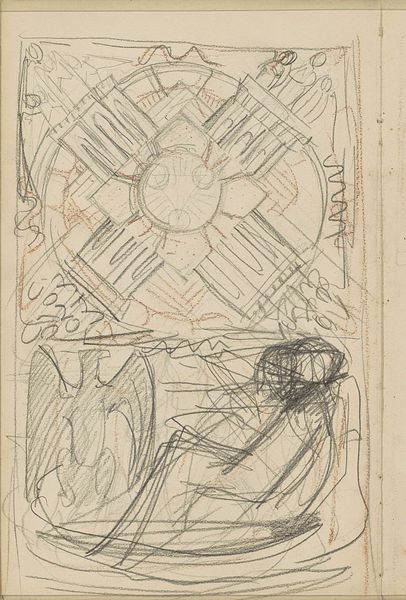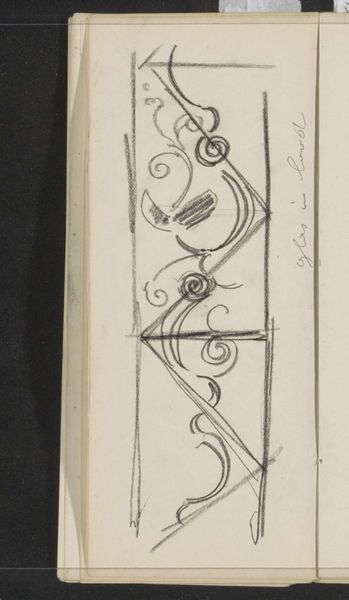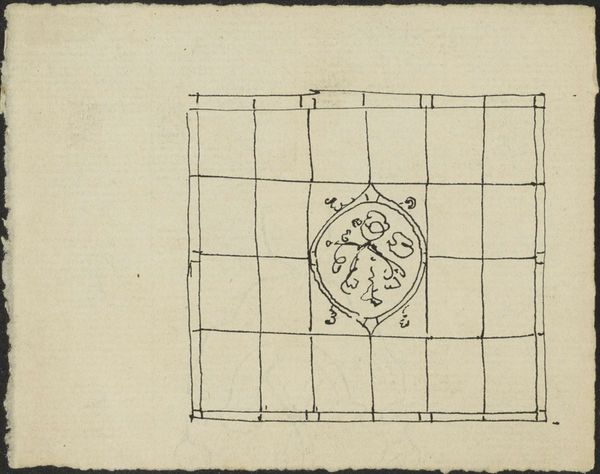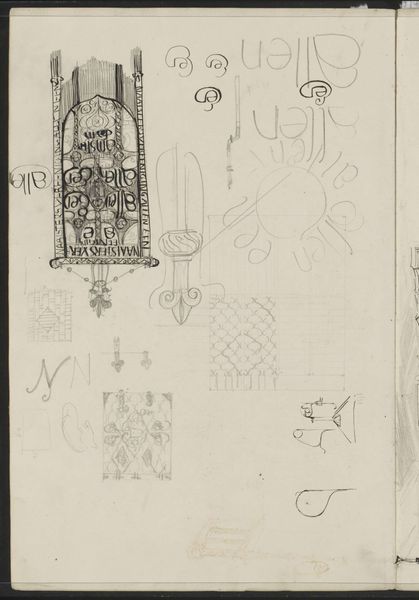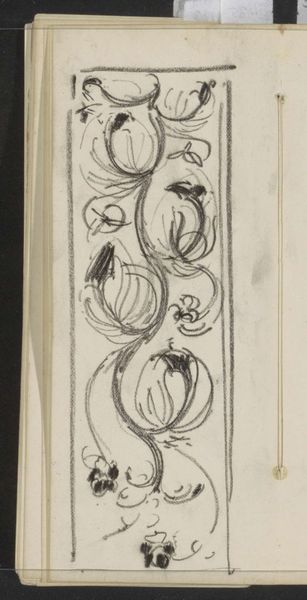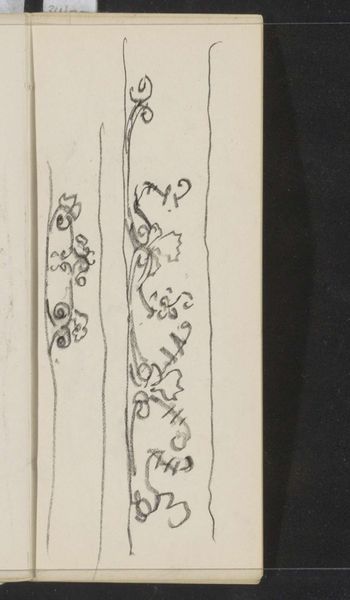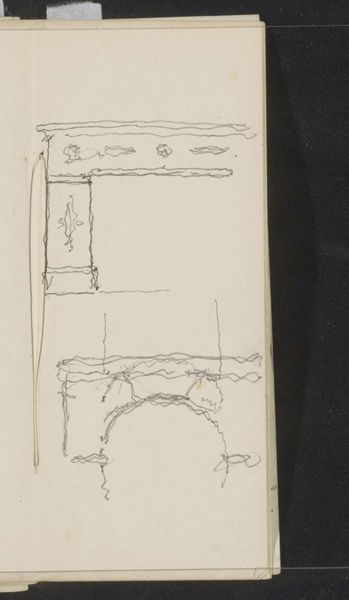
drawing, mixed-media, paper, pencil
#
drawing
#
mixed-media
#
art-nouveau
#
paper
#
geometric
#
sketch
#
pencil
Copyright: Rijks Museum: Open Domain
Editor: So this is Gerrit Willem Dijsselhof's "Ontwerp voor een glas-in-loodvenster," or "Design for a Stained-Glass Window," which was made sometime between 1876 and 1924. It's a mixed-media drawing with pencil on paper. I find the sketch intriguing, almost like looking at a blueprint for a world that prioritizes geometric harmony. What do you see in this piece? Curator: This piece, even in its sketch form, speaks volumes about the socio-political aspirations of the Art Nouveau movement. Consider the embrace of ornamentation not as mere aesthetics, but as a direct challenge to the industrial, often dehumanizing, aesthetic of the era. How might Dijsselhof's choice of geometric forms reflect a yearning for order amidst rapid social change? Editor: I guess I hadn’t thought about it as a response to industrialization. So, the geometry is about order? Curator: In a way, yes. The clean lines and the symmetry present a controlled, almost utopian vision. Think about the context: growing urbanization, labor unrest. Art Nouveau sought to create beauty for everyone, democratizing aesthetics. But also consider the potential contradictions. Who had access to this "beauty"? Editor: That's a good point. While the style may have been intended for the masses, the reality might have been different. Did this accessibility to "beauty" reinforce social class? Curator: Precisely! We always have to critically examine whose voices are amplified and whose are silenced in these movements. This sketch, while seemingly innocent, opens up crucial conversations about art, access, and social equity. What did you learn today? Editor: That even something as simple as a sketch can reveal really complex ideas about society and who has access to beauty! Thanks!
Comments
No comments
Be the first to comment and join the conversation on the ultimate creative platform.
